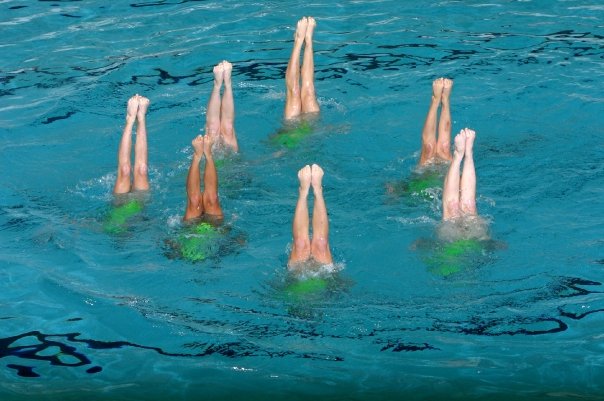The Application of Sports Science
Interview with
How is scientific insight applied to improve the performance of team GB? We meet one of the scientists applying science to sport, ensuring the team takes to the tracks, pools, water and more in peak condition over the Olympic games...
Steve - My name is Dr. Steve Ingham. I'm the Head of Physiology at the English Institute of Sport. As an applied sport scientist, it's our job to bridge fundamental research with the coach and athlete's day-to-day practice and training to try and individualise that physiological concept so that it can work for them. So that it can improve their physiological capabilities run faster, be stronger and so on.
Meera - Is there any particular point during an athlete's training or any particular part of a training programme that's really been influenced by scientific input?
Steve - There's lots of ideas that make sense, but a coach might not like it. So you bring something new forward and it feels like innovation. It feels like  change. A probably good example of that for us recently has been changing the warm up just prior to a competition and athletes and coaches are quite protective around that because they don't really want to go messing around with different types of fancy warm ups.
change. A probably good example of that for us recently has been changing the warm up just prior to a competition and athletes and coaches are quite protective around that because they don't really want to go messing around with different types of fancy warm ups.
We've introduced a new high intensity warm up method across sports that's only really been possible through good scientific data, objective testing, and then showing the data to the athletes and coaches. Athletes and coaches suddenly click and twigged,
"Yeah, I get this idea now. Let's try it out in training and progress that through to a minor competition, and then into a big competition." See the performance data and then that should speak for itself.
Meera - Did it make a particularly big difference?
Steve - The performance gain of about 1% difference, to a runner for example that's 5 meters or so, it's a lot and they don't have to work particularly hard to achieve it and it works in the right direction.
Meera - So all of this knowledge and this scientific input, how big a role does that play today, and should it play as big a role as it is?
Steve - If a coach or an athlete trains or prepares in a certain way that's based on just superstition or habit, that doesn't really cut it in this day and age. You have got to have good evidence as to why you're doing a certain thing. We've got to get smarter about improving our performance standards because other countries are; they're benefitting from scientific input and reducing the probability that they're going to fail. Perhaps on a flip side, maximising or optimising their chance at achieving. So I think it's great investment. Some of the discoveries and breakthroughs can also echo down to the scientific and exercise literature. Also hopefully, it will lead to more success.
Meera - The athletes using this training and testing methods are certainly hoping these methods bring success.
Katie - Hi. I'm Katie Skelton. I'm 24 and I'm part of the Great Britain synchronised swimming team.
Synchronised swimming is built up of many different things. For example, it's like dancing in the water, so you need to be able to move to music well. You need to be very flexible so we do a lot of stretching in that area. We also need to be really fit and strong. So, we work a lot in the gym doing weights and a lot of fitness. We do a lot of speed swimming like swimming up and down. So there's loads of components to make you a good synchronised swimmer.
Meera - What about your actual knowledge of how your body works?
Katie - Physiology has helped us with learning about our body over the years.  For example, we do the VO2 max test. This is really important because we need to be fit to be able to swim our routine.
For example, we do the VO2 max test. This is really important because we need to be fit to be able to swim our routine.
We also do lactate testing which is really useful for us to do when we're training and they've also done it when we're at the Europeans to see whether the intensity and the lactic acid is the same during training and competing to see whether there's any difference.
They've also done it on other teams as well to see the variables within the different teams and different countries, looking at what level the winners to where we are ranked, to see what the difference is to help us improve.
Meera - And have you found that quite useful? Has it led to improvements in your performance?
Katie - Yes, because you realise when it is best to do some physical training, when it's best to go easier. They know when we're going to really build up lactic acid and is the routine hard enough because they will need to be able to reach a certain lactate point. So it's really helped us improve.
Meera - And also seeing a difference are the team GB adaptive rowers.
Pam - Hi. My name is Pam Relph and I'm in the legs, trunks and arms mixed cox four. That's a boat with two men, two women and a cox that we row over 1,000 meters. Rowing is an endurance sport so I wouldn't say that I was the most powerful of athletes, but when it all gets hard, I just keep going. I have long arms, long legs and being quite tall I think is probably the best physical traits that you need.
Meera - Do you work with physiologists to really get an insight into what's going on inside your body whilst your training?
Pam - Yes, so we get lactate tested during endurance training. We have a testing called skinfold testing which is essentially measuring how much body fat you have on your body. So for example if I was to put on weight, but my skinfold number was to go down then that would mean that the weight I've put on has been muscle mass rather than fat which is obviously good to have a lot more muscle if you want to be a professional athlete. Another test that we can do is a VO2 max test.
Meera - So there's really a lot tested. You're getting blood samples and so on out whilst you're rowing but you are also tested in the lab.
Pam - Yeah, we're tested in the lab and we're also tested when we're on camp to make sure that we're hydrated. We have to do urine tests every single morning to make sure that we're fully hydrated and that's quite useful to see because I think it's a 1% drop in hydration equals a 5% drop in aerobic fitness or something along those lines. I think that having information available to you in sport is necessarily essential. I think that if you do the training, your body is going to get fitter but I think it gives you really an idea and an insight into what your body is capable of and what stresses you can put your body under before it breaks.
Meera - Pam Relph and before her, Victoria Skelton from team GB, and before them, Steve Ingham, Head of Physiology at the English Institute of Sport.









Comments
Add a comment